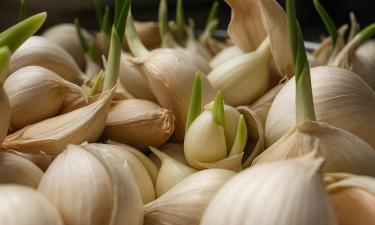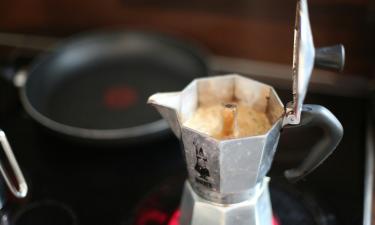Delicious Medicines of Paradise Hidden in Nearest Grocery Store
If you are tired of eating frozen strawberries and cherries, give tropical fruits a try. They may be not only a great dessert, but a cure for many diseases.
Lychee
The fruit is covered by a leathery rind which is pink to strawberry-red in color and rough in texture. The Chinese call it “dragon eye.” The inside is somewhat similar to that of a grape, and the fruit smells like roses. The “dragon eye” is grown in Vietnam, Australia, Madagascar, India, and in the south of the USA.
The fruit preserves its quality during transportation, and can be shipped long distances. Fresh fruit can be stored at room temperature for three days, and refrigerated for up to a week.
Lychees are high in heart-healthy polyphenols, mineral salts, and vitamin C. Chinese doctors use it to prevent many diseases, including anemia and cardiac distress.
Passion Fruit
The nearly round fruit ranging in hue from dark purple to light yellow, native to Brazil. Latin Americans claim that if a lotion with a few drops of the fruit juice is applied to the body, the skin exudes a wonderful irresistible aroma, hence the name.
The fruit has a unique, refreshing, sweet to tart flavor, and many seeds.
Passion fruit rids the body of toxins, improves digestive and kidney functions. It is also recommended for treatment of liver diseases and low blood pressure.
Mangosteen (Garcinia Mangostana)
One of the most praised of tropical fruits. The fruit is round, with a thick purple rind surrounding fruit segments. The segments are white, covered with a slightly bluish grid. The pulp is aromatic and has a delightful sweet sour taste.
It takes some effort to get to the pulp. The rind is very tough and can be open with a knife. If the segments under the rind have a dark beige color and are sticky to touch, you got a bad fruit.
Mangosteen helps adapt to the sun, reduces swelling and skin irritations.
Papaya
The fruit is shaped like a stretched out pumpkin and weights from 0.5lb to 11lb. The pulp is bright - orange, with black seeds. The fruit's taste is vaguely similar to melon and apricot. The best feature of the fruit is papain, a chemical that breaks up protein and fats.
Papaya improves liver function, normalizes blood sugar and intragastric acidity. The pulp also contains vitamin A and magnesium that slow down skin aging and formation of wrinkles.
Pomelo (Citrus maxima or Citrus grandis)
The largest citrus in the world. Ripeness of the fruit can be identified by aroma. The stronger the aroma, the riper the fruit. The taste is similar to that of grapefruit, but sweeter. This large citrus is grown in Malaysia, Thailand, and Indonesia.
Pomelo is rich in vitamin C that increases elasticity of blood vessels. In America and Asia the fruit is used to treat high blood pressure.
Kumquats (or cumquats)
Kumquat, a citrus fruit, is also called “Japanese orange.” It originated in South-East China. The fruit are of oval shape and can vary in hue from golden-yellow to bright-orange.
Unlike other citrus, kumquat is often consumed whole, with skin, which gives the pulp a unique fragrant taste. The fruit is often used to prepare candied fruit.
The fruit is rich in calcium, vitamins A and C. In China, kumquat is used to treat fungus. In other Asian countries the fruit’s skin is laid out at the fire, as it is believed that the aroma helps treating cold and cough. Vietnamese use the fruit to treat hangover. Kumquat is great for cleansing blood vessels and lowering cholesterol level.
Banana passionfruit (curuba)
When Curuba-Fruit is mature it looks like a small banana; hence, its English name, Banana-Passion-Fruit. The fruit has a soft velvety surface of green or yellow color. The inside of the fruit is filled with orange drops with dark seeds inside. Banana passionfruit has a unique fragrant taste.
The fruit quenches thirst, improves sleep and alleviates stress. They are not recommended for those suffering from stomach ulcer and gastritis.
Soursop (Guanabana)
The fruit is native to the South America. It is shaped like a green melon covered with multiple fibers. The fruit may reach 20lb. The pulp is white, creamy and fibrous, with a fresh aroma and sour taste.
The fruit supports stomach micro flora and improves liver function. It is recommended for those suffering from rheumatism, arthritis, and uratic arthritis.
Lulo
The lulo fruit has an orange skin and its internal flesh looks like a seedy green tomato. Its taste resembles a mixture of pineapple, strawberry and tomato.
The fruit is wonderful for quenching thirst and improving sleep. It is rich in phosphor and vitamin A, which means it strengthens the nervous system, hair and nails.
Lulo is not recommended for those prone to allergies, low blood pressure, and liver disorders.
Ilona Milova
Medpulse
Subscribe to Pravda.Ru Telegram channel, Facebook, RSS!





